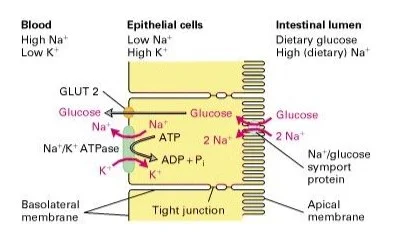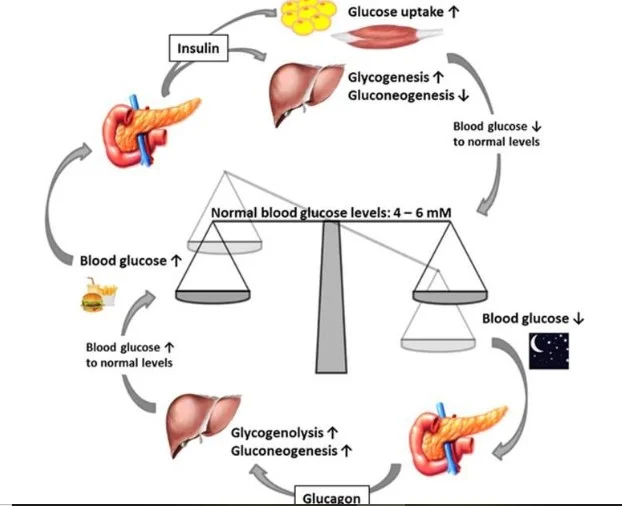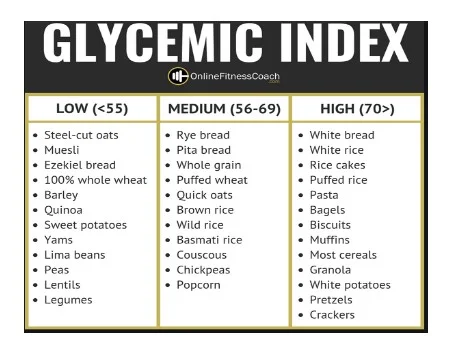Mechanism of Homeostatic Glucose Control
Homeostatic glucose control
To effectively understand the concepts of hypo/hyperglycemia, drug-mediated hypoglycemia and the sequelae of hyperglycemia I will explore the mechanism of homeostatic glucose control. This explains how glucose is extracted from food, stored in the liver, and how the pancreas regulates blood glucose levels through two hormones, Insulin and Glucagon.

When an individual eats food, carbohydrate gets digested into monosaccharides such as glucose, lactose and sucrose, 80% of which is glucose (Misra & Hattersley, 2017). The glucose absorption process involves transporting glucose from the intestinal lumen into the absorptive cell occurs in two stages (Misra & Hattersley 2017). Na ions are actively transported out of the epithelial cell by the Na/K ATPase channel (the presence of ATP means this is an active process that requires energy). This creates a low Na environment in the epithelial cell. Since the intestinal lumen contains a high concentration of Na from ingested food there is now a concentration gradient of high to low (intestine to cell). The Na from the intestine is absorbed via a symport transporter protein. This protein allows glucose to be absorbed at the same time as Na via facilitated diffusion (Chen, Tuo, & Dong, 2016). For students who are willing to understand such processes, professional guidance and support in writing a comprehensive biology dissertation can be valuable. If you need expert assistance, then consider seeking biology dissertation help in order to ensure success.

Figure 1.1: Transport of glucose from the intestinal lumen into the blood (Chen, Tuo, & Dong, 2016).
The presence of high blood glucose will stimulate insulin production and insulin release from the pancreas. The insulin will then target different organs by binding onto insulin receptors or insulin sensitive proteins with purpose of decreasing blood glucose levels (Misra & Hattersley, 2017). The binding of insulin to its receptors triggers a cascade of events within the cell leading to an increased uptake of glucose from circulation into blood by for example producing more glucose channels or transporters on the surface of the cells allowing glucose to move from the blood into the cells of the organs.
Insulin also promotes glucose storage. In the liver, insulin stimulates glycolysis and glycogenesis to store glucose as glycogen. Insulin also stimulates glucose to be stored as fats which will be subsequently be transported into the adipose tissue (Misra & Hattersley, 2017). Thus, high blood glucose stimulates insulin release. Consequently, glucose is reduced to normal levels.
However, in T2D, there is insulin resistance, which means that the receptors which insulin works on usually do not actually work properly. So, insulin does not work properly on liver, adipose tissue and skeletal muscle (Misra & Hattersley 2017). As a result, there will be high blood glucose levels for longer periods of time.
Insulin resistance is caused by a variety of factors including genetics, family predisposition, bad eating habits and obesity. Because of insulin resistance, glucose cannot be taken up by all these organs; leading to high blood glucose. Because there is high blood glucose, the pancreas is told to secrete more insulin despite not changing the fact that insulin sensitivity is present. With persistent high blood glucose, the glucose will travel to the kidneys and secreted out in a process called glucoseuria. Glucoseuria will cause osmotic diabetes (Misra & Hattersley, 2017). This means that glucose will drag water with it is solid; and so, the person will start seeing more polyuria. With constant polyuria, the person will lose water and electrolytes leading to two main things namely dehydration and hyperosmolar state (Misra & Hattersley 2017). The dehydration will stimulate the brain to drink more water, leading to polydipsia. Nonetheless, insulin resistance can also lead to polyphagia, which is the urge to eat more.

Figure 1.2: Maintenance of blood glucose levels by glucagon and insulin (Röder, Wu, Liu, & Han, 2016).
Therefore, in the case of diabetics, the beta cells cannot produce the amount of insulin required to instruct the body cells to absorb the glucose (Iacovazzo et al, 2018). The amount of unabsorbed glucose in the bloodstream remains high and the cells are resistant to absorb the glucose. Furthermore, diabetics have low insulin reception capabilities, meaning that there is a cell receptor are dysfunctional leading to insulin resistance – causing hyperglycemia (Misra & Hattersley 2017).
The dangers of hypoglycemia have been largely highlighted by the literature. According to Diabetes UK (2014), hypoglycemic patients have a low supply of blood glucose in the brain, and the low blood sugar is sensed by a part of the brain called the ventromedial hypothalamus (Borg et al, 1995). Upon the ventromedial hypothalamus sensing low blood sugar level on the brain, the body releases epinephrine and glucagon to increase glucose production by increasing hepatic glycogenolysis.
Specifically, epinephrine is one of the many hormones that is water soluble and therefore unable to cross the hydrophobic plasma membranes of its target cells. Instead, it binds to beta-adrenergic receptor proteins located in the plasma membrane and does not enter the cell. When epinephrine beta-adrenergic receptors on the liver cells, G-proteins on the inners side of the membrane are activated. Each G-protein is composed of three subunits and the binding of epinephrine to its receptor protein cause one of the G-protein sub-unites to dissociate from the other two. The dissociated G-protein subunit carries a GDP, which is replaced by a GTP when the subunit is activated (Iacovazzo et al, 2018). The activated G-protein subunit the diffuses within the plasma membrane until it encounters adenylyl cyclase that is a membrane enzyme that is inactive until it interacts with the G-protein subunit. When activated by the G-protein subunit, adenylyl cyclase catalyzes the formation of cAMP from ATP (Misra & Hattersley, 2017). The cAMP formed at the inner surface of the membrane diffuses within the cytoplasm where it binds to and activates protein kinase A- and enzyme that adds phosphate group to its specific cellular proteins. In liver cells, protein kinase A- phosphorylase activates another enzyme called phosphorylase which converts glycogen into glucose-6-phosphate (Iacovazzo et al, 2018). The Glucose-6-phosphate is then converted to glucose. Through this multi-step mechanism, epinephrine causes the liver to secrete glucose into the blood during a fight and flight reaction.
Moreover, low blood sugar level on the brain promotes the death of neuronal cells as well as oxidative stress, resulting from the activation of neuronal NADPH oxidase and release of extracellular zinc during glucose reperfusion (Iacovazzo et al, 2018). The illustrations on the meaning of glycemic control and hypoglycemia reveal why the balancing act of maintaining glycemic control is a challenging task that requires both the patient and caregivers to have adequate knowledge and understanding of type of food to take, at what time (i.e. glycemic index and glycemic load).

Glycemic Index
Glycemic index is a way of analyzing carbohydrate foods based on their impact on blood sugar levels. The index ranks carbohydrates on a scale of 0-100 based on how much they raise blood sugar levels after eating (Misra & Hattersley, 2017).
Foods with a high GI are rapidly digested and therefore cause large fluctuation in blood sugar levels. Lower GI foods are more slowly digested and produce gradual rises in blood sugar levels. To determine a food’s GI level, most food production companies rate GI on a high, medium and low scale (Misra & Hattersley, 2017). As illustrated below, a 55 or less, 56-69 and 70 or more glycemic levels are considered as low, medium and high respectively.

(Misra & Hattersley 2017)
Research Paradigm
In social sciences, pragmatic research paradigm has seen a wider popularity because it includes mixed methods, approaches, principles and ideas to solve the underlying research problem (Snyder, 2019). Particularly, this study uses pragmatic research paradigm because as opposed to positivist paradigm that focuses on absolute reality or truth, it focuses in what can be achieved. The main aim of this study is to explore the impact of patient health education on hypoglycemia and glucose control. Thus, the researcher is interested in identifying any impact that health education might have on patients’ glucose control or hypoglycemia rather than what positivists would consider as the real impacts. Therefore, because the study takes a flexible approach to exploring the impacts of patient education, pragmatic research paradigm emerges to be the most appropriate. According to believes in the pragmatic paradigm, there is no single way of solving problems but a mix of approaches can help in finding the truth and solving the research problem (Smith, 2010). Therefore, by adopting a mixed approach in the study, the study used both qualitative and quantitative studies to achieve its objectives.
Looking for further insights on Integrated Assessment of a Diabetic Patient with End-Stage Renal Disease? Click here.
- 24/7 Customer Support
- 100% Customer Satisfaction
- No Privacy Violation
- Quick Services
- Subject Experts



